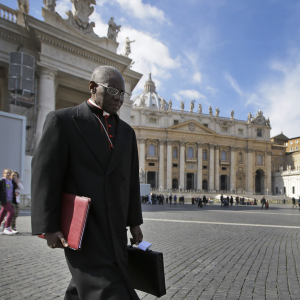Katy Hounsell-Robert from Barcelona
On Sunday 25 September 2011 in La Monumental bull ring Barcelona, in the heat of the afternoon, the very last bull was killed, the blood draining from the slaughtered animal painting the well-tended sandy floor of the amphitheatre a sinister shade of crimson as its carcass was dragged away by mules. After the last bull had been slaughtered, Catholic Action for Animals and other animal rights groups celebrated in the streets and sang the praises of the Parliament of Catalonia's decision to ban bullfighting in the region to an invested media. But there was outrage too: bullfighting is a spectacle steeped in tradition that the Spanish believes evokes ancient rituals that are very much as integral a part of Spanish people's lives as Flamenco dancing, which people come to Spain from all around the world to watch.
The Canary Islands had already banned bullfighting in 1991 and this move led to more Catholic groups petitioning the Pope, complaining that Feast Days should not be celebrated in Spain with Mass in the morning and bullfights, with their needless suffering and violence towards animals, in the afternoon.
Pope Francis is certainly not the first pope to rail against the bloodthirsty 'sport'. In 1567, Pope Pius V issued a papal bull forbidding the fights, and any matador killed in the ring was denied a Catholic burial. In the 1930s Pope Pius Xl forbade priests from attending bullfights but it still went on. Romanticised by Georges Bizet in the opera Carmen, in Francisco Goya's numerous paintings and later in Ernest Hemingway's novel Death in the Afternoon, bullfights continue to be an iconic image of Spain, although audience figures have dropped considerably over the years. The Catalonians - the younger generations in particular - would far rather watch football with Barcelona and Espanyol football teams average between them more than 100,000 football fans attending their home games.
The ban was seen by many as a targeted banderilla – the colourful barbed dart that a matador thrusts into the bull’s neck – aimed at the Spanish government by those demanding independence for Catalonia, and in due course the Prime Minister of Spain, Mariano Rajoy's, ruling Centre Right party declared that the ban violated the National Constitution and was therefore illegal. “This historic art form is so ingrained in Spain's national culture that it must never be banned,” he declared.
Bishops in Catalan have consistently supported the peaceful campaign to restore Catalonia’s national independence and historic identity. Since 1714 when the Bourbon King Philip V defeated Barcelona in the Spanish War of Succession and forced the principality of Catalonia into a united Spain, moving his capital from Toledo to Madrid, many Catalans have never given up hope of being once again the citizens of an independent Catalan state. Much later, forced under Franco to speak and write Castilian, the Church kept the Catalan language going, with bishops advocating that sermons be preached in Catalan. Now Masses are held in Catalan as well or instead of Castilian, and schools teach Catalan as the first language. The feast of St Jordi (George), one of the patron saints of Catalonia, on 23 April is celebrated in the Catalan tradition by giving every woman a rose and every man a book and filling the squares round the cathedrals and churches with music and food stalls, building “human castles” (people standing on a circle of shoulders higher and higher until it all collapses) and dancing the sedate traditional Sardana, inviting visitors to take part.
The other patron saint is the Black Madonna, who resides in a special chapel over the high altar in the Basilica of the Monastery of Santa Maria, high up in the Montserrat mountains. She has her feast day on 27 April, when the usual Catalan festivities take place on the square, together with the rosary, vespers and a vigil the evening before and High Mass on the morning, with the Escalonia Boys Choir singing “Salve Regina” and “El Virolai”, the hymn dedicated to her. Every day, the basilica is packed with queues of pilgrims coming to kiss or touch her hand, holding the orb through an opening in the glass case protecting her. She is known locally and affectionately as La Moreneta (“the little dark one”) and is very much a symbol of Catalan identity, and over the years the monastery became been a refuge for fugitive separatists.
Dr Don Torras i Bages, in the late nineteenth and early twentieth centuries, twice turned down the position of bishop to remain as abbot there and preached and wrote about returning to an early Catalonian Catholic life called “Seny”, based on balance, simplicity and taking time to consider both good and bad events. This, he thought, should be the spiritual basis of Catalonian life. He had carved on the wall of the monastery “Catalonia sera cristiana o no sera” (Catalonia will be Christian or not exist).
At their last conference the Catalan bishops stated: “It is not the Church's place to propose specific options but we do defend the moral legitimacy of all political options, based on the dignity of people's perseveringly seeking peace, solidarity and justice. We want to contribute to the reflections of all the citizens of Catalonia with the light that comes to us from the Gospel of Jesus Christ, aware that decisive questions on the institutional, political and social level are in play.” At the same conference, Cardinal Antonio Canizares Llovera of Valencia requested prayers for a united Spain.
I think Dr Torras i Bages would have approved of the newly elected President of the Catalan Parliament, Carles Puigdement, a former journalist. He has made many approaches to Madrid, seeking to discuss instances of injustice and financial mismanagement and the lack of co-operation between states. He has promised Catalans a referendum on independence by September this year.
In a speech at Harvard University last month he explained why this vote has to take place. He gave several reasons for the Catalans’ right to hold a referendum – including the Spanish government’s ban on bullfighting.
It is going to be an interesting year.




 Loading ...
Loading ...
What do you think?
You can post as a subscriber user ...
User comments (0)